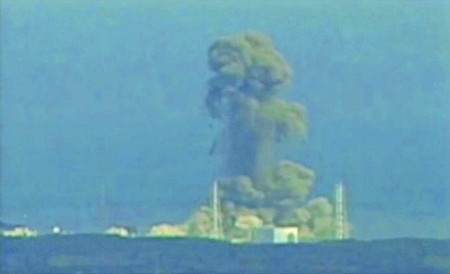Princeton University’s Institute for the Science and Technology of Materials (PRISM), presentation by Georg Steinhauser of Colorado State University, scheduled for Nov. 5, 2014 (emphasis added): Radionuclide Analysis in Environmental Research after the Fukushima Nuclear Accident — The Fukushima nuclear accident will remain in public memory as one of the worst environmental disasters of the 21st century… Radionuclide monitoring is essential to understanding radioecological consequences and effects on food safety… Monitoring also is central to forensic work that may help understand the accident and its chronology. To date most of radionuclide monitoring has focused on… 137Cs, 131I, and 132Te. Relatively little work has been done on the monitoring of difficult radionuclides such as 90Sr or plutonium that are highly health relevant… Our analyses revealed relatively high concentrations of 90Sr; however, these activity concentrations were exceeded by 137Cs by usually 3 to 4 orders of magnitude. In two spots within the exclusion zone we could also prove environmental presence of plutonium from Fukushima. Our studies show… amounts of… plutonium have been emitted from the reactors, which was not expected for this accident scenario. The mechanisms of release of these radionuclides are not yet fully understood.
Scientific Reports (Nature), Dec. 2013: Since the 1940s, plutonium isotopes have been produced and released into the environment due to human nuclear activities, including… accidents of nuclear power plants [like the] Fukushima accident… Among the 20 isotopes of Pu, 239Pu and 240Pu with half-lives of 24,110 yr and 6,561 yr, respectively, are the most important ones due to their highly radiological toxicities and long-term persistence… Based on the significantly different isotopic composition of Pu related to its production and releases, the measurement of isotopic ratios and decay products of Pu in the environmental materials can be used to identify its source term and age.
US Defense Threat Reduction Agency presentation ‘Operation Tomodachi Radiological Waterborne Hazards’, 92nd American Meteorological Society Annual Meeting (at 12:00 in): At the beginning – I don’t want to go down a rabbit hole too far – this nuclear power plant, as in any radiological event, what are the radionuclides? We don’t know the inventory. We can kind of guess at it because we know what the plant has from a practiced a standard, or whatever they publish for the IAEA. But once again, for the discrete radionuclides, what is that? What are those radionuclides? That was the one part that we really had to grapple with… So we had to actually backtrack, look at the — as much as we could — the time history associated with that particular nuclear power plant. Look at what actually they were using, and the fuel rods they were using. There was speculation about plutonium. There’s speculation about what other they were using.
